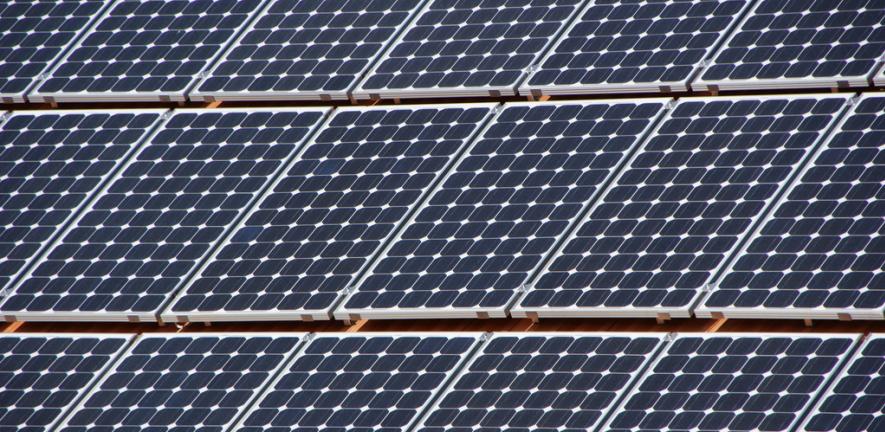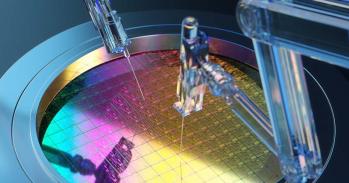
The causes of a hitherto mysterious process that could enhance the power of solar cells have been explained in a new study.
The causes of a hitherto mysterious process that could enhance the power of solar cells have been explained in a new study.
If we want to implement this in a solar cell, we need to understand more about why and how singlet exciton fission occurs in the first place.
Andrew Musser
The underlying mechanism behind an enigmatic process called “singlet exciton fission”, which could enable the development of significantly more powerful solar cells, has been identified by scientists in a new study.
The process is only known to happen in certain materials, and occurs when they absorb light. As the light particles come into contact with electrons within the material, the electrons are excited by the light, and the resulting “excited state” splits into two.
If singlet exciton fission can be controlled and incorporated into solar cells, it has the potential to double the amount of electrical current produced from highly energetic blue and green light, capturing a great deal of energy that would normally be wasted as heat and significantly enhancing the efficiency of solar cells as a source of green energy. Until now, however, scientists have not really understood what causes the process, and this has limited their ability to integrate it into solar devices.
Writing in the journal Nature Physics, a team of researchers shows that there is an unexpected link between the splitting process and the vibration of the molecule that occurs when light comes into contact with the electrons. This vibration is thought to drive the production of two excited electrons, revealing for the first time how singlet exciton fission happens.
The study was carried out by researchers from the Cavendish Laboratory at the University of Cambridge, and the University of Oxford. As well as solving a hitherto mysterious problem of quantum physics, it potentially provides a basis on which new singlet fission materials could be developed for use in solar cells.
Dr Andrew Musser, a post-doctoral research associate and former PhD student at St John’s College, University of Cambridge, who co-authored the research paper, said: “We tend to characterise singlet exciton fission as a sort of two for the price of one deal on electrons, because you get twice as much electrical current. The problem is that if we want to implement this in a solar cell, the material needs to be engineered so that it is compatible with all the other components in the device. That means that we need to design a range of materials that could be used, and to do that, we need to understand more about why and how singlet exciton fission occurs in the first place.”
At its most basic, singlet exciton fission is a product of the fact that when light particles, or photons, come into contact with an electron, the electron is excited by the light and moves. In doing so, it leaves a “hole” in the material’s electronic structure. The electron and the hole are still connected, however, by a state of mutual attraction, and the two together are referred to by physicists as an “exciton”.
These excitons come in two very different flavours: spin-singlet and spin-triplet, and in rare circumstances, they can convert from one to the other.
In the natural world, spin-singlet excitons are a part of photosynthesis in plants, because the light absorbed by pigments in the plant generates excitons which then carry energy throughout it. Solar cells imitate this process to generate and drive an electrical current. Conventional solar cells are silicon-based, and the absorption of a single photon leads to the formation of a single, excited electron that can be harvested as electrical current.
In a handful of materials, however, singlet exciton fission occurs instead. Rather than producing just one spin-singlet exciton, two spin-triplets appear when a photon is absorbed. This offers the tantalising prospect of a 100% increase in the amount of electrical current generated.
Researchers attempting to solve the puzzle of why the process happens at all, and why only in certain materials, have typically looked at how the electrons behave when they absorb light. In the new study, however, the team instead focused on the fact when the electrons move in response to the light, the molecule of which they are a part vibrates.
The team used thin samples of TIPS-pentacene, a semiconducting material in which singlet exciton fission is known to occur. They then fired ultra-fast pulses of laser light at the samples, each pulse lasting just 10 “femtoseconds”, or 10 quadrillionths of a second. The miniscule timescale was necessary so that large numbers of molecules could be vibrated synchronously, enabling the researchers to measure the response of the molecule and the resulting effect on the electrons as light hit the material. The measurements themselves were made using ultra-fast vibronic spectroscopy.
To the researchers’ surprise, they found that the molecules in the pentacene samples not only vibrated as singlet exciton fission occurred, but also continued to do so afterwards. This implies that the formation of two spin-triplet excitons is stimulated by the vibrations themselves, and the resulting tiny, fast changes in the shape of the molecules.
“We are fairly confident that this underlies all ultrafast singlet fission,” Dr Akshay Rao, a Research Associate at St John’s College, Cambridge, who led the Cambridge team, said. “The picture that emerges is that when they are excited by light, the intrinsic vibrations drive the development of a new electronic state.”
By understanding the fundamentals of singlet exciton fission, the study opens up the possibility of designing new singlet fission materials that would enable the process to be effectively integrated into a new generation of highly efficient solar cells. Future research is already being planned in which the group will examine the precise vibrational states that are required for singlet exciton fission to happen, which will further add to this knowledge.
The work at Cambridge forms part of a broader initiative to harness high tech knowledge in the physical sciences to tackle global challenges such as climate change and renewable energy. This initiative is backed by the UK Engineering and Physical Sciences Research Council (EPSRC) and the Winton Programme for the Physics of Sustainability.
The text in this work is licensed under a Creative Commons Licence. If you use this content on your site please link back to this page. For image rights, please see the credits associated with each individual image.





